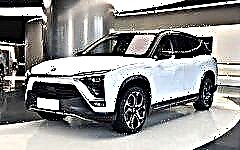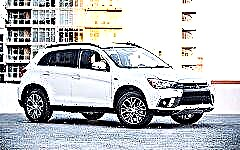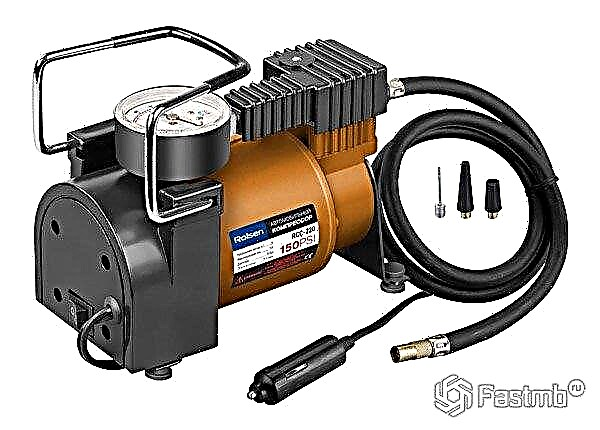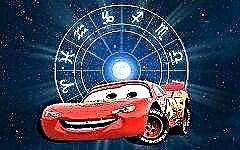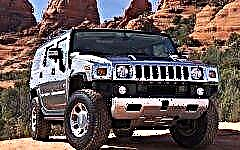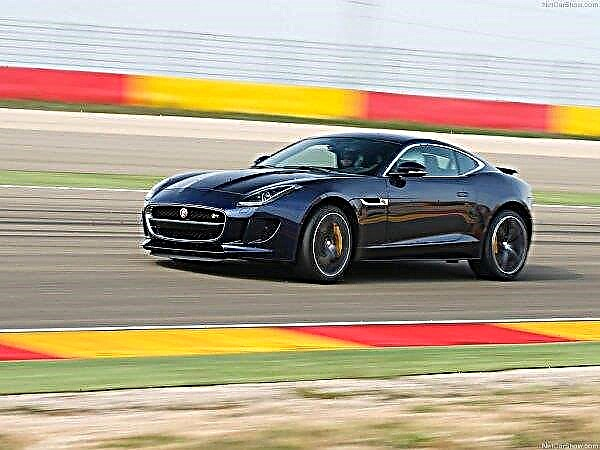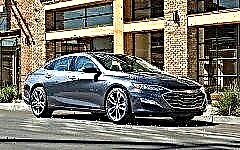

The content of the article:
- History of the creation of the model
- First generation Volkswagen Tiguan
- Second generation Volkswagen Tiguan
Volkswagen Tiguan cars are compact SUV-class crossovers. Since the release, two generations of crossovers have been created, of which the first was intended for driving in urban conditions, and the second for fans and lovers of a sports drive while driving.
There are versions with both front and all-wheel drive. From the very beginning of production, cars were equipped with only turbocharged engines.
The creators of the Volkswagen Tiguan managed to combine in one car a frisky passenger car, a passable crossover and a roomy car for a large family.
History of the creation of the model
The ancestor of the Volkswagen Tiguan can rightfully be considered the Volkswagen Golf II in Country performance. Produced in a short time period (1990-1991), the car, however, was a body placed on a frame, from which an all-wheel drive five-door hatchback was assembled.
Volkswagen plant engineers planned to produce more than 15 thousand cars, but buyers coldly accepted the new car. For a couple of years, only 7,735 copies of the Country modification were sold. Production had to be curtailed.
The idea to name the car Tiguan was formed from two words - tiger (tiger) and iguana (leguane).
Initially, the name was chosen popularly, by means of a vote. The Germans offered many names - Rockton, Nanuk, Namib, Samun. They even tried to somehow beat the name of the place of manufacture of the car - the city of Wolfsburg, which means "fortress of wolves" in translation.
The work on the exterior of the crossover was personally led by the chief designer of the studio from Wolfsburg, who certainly liked the look of the Touareg. This tracing has led to the fact that both cars are indecently similar, and even the difference in size cannot hide the similarities.

In the photo: Tiguan vs Tuareg
The first Volkswagen Tiguan was shown to the world at the 2006 Los Angeles Auto Show. The car, unlike its ancestor, attracted the interest of the public, receiving good popularity indicators.
Based on the results of the car dealership, Volkswagen decided to send this car to the conveyor. Crossovers launched into production. The first cars in the form of "intrigue" appeared first in the photographs in the summer of 2007, but soon they were "declassified", presented at the Frankfurt Motor Show, and then quickly launched into the free sale.
In the same year, at the Shanghai Motor Show, another version of the Volkswagen Tiguan, a hydrogen-fueled hybrid HY Motion, was put on display.
For the hybrid version with an electric motor, the performance was surprisingly good: the car developed an output of 240 hp. and could move at a speed of 150 km / h.

In the photo: Volkswagen Tiguan-hybrid HY Motion
Volkswagen Tiguan sales centers are located in Europe, USA, Brazil, Australia. On the territory of the Russian Federation, cars are assembled at the Kaluga branch of the Volkswagen plant.
Initially, production was carried out only in the form of an assembly of large units, but later it switched to a full cycle. Now in Kaluga they stamp, brew, paint the body.
In Vietnam and China, joint ventures have been established to produce machines. In the United States, the car is produced under the name Volkswagen Tiguan Limited, equipped with a 2.0 TSI gasoline engine with 200 hp. and a six-speed automatic transmission.
First generation Volkswagen Tiguan

For Volkswagen, the Tiguan is its debut in the SUV class. Small compared to its older brother, the Touareg, the crossover still got the look of a serious road conqueror. He had an impressive ground clearance of 200 mm, large-diameter wheels, high seating position, wide rear body pillars.
The main car was the platform from the fifth and sixth Golf (PQ35). It also builds more than two dozen models of the German company - Golf Plus, Touran, Caddy, Scirocco, Beetle, Jetta, and cars with similar characteristics - Octavia, Skoda Yeti, Audi A3 / Q3 / TT.
Despite the unified platform, the AudiQ3 is in the premium segment and does not compete with the Tiguan.
The car was equipped with versatile engines. Gasoline and diesel, with gas turbine or mechanical superchargers, and sometimes both at the same time, they gave out very decent power characteristics of the power unit.
Gasoline engines were presented in two forms:
- 1.4 liters. A small power unit due to the TSI system (combining direct fuel injection and turbocharging), mechanical and turbocharged compressors developed a power of 150 hp. There was a turbocharged version of the engine, it was weaker - 122 hp.
- 2 liters. All engines of this volume had a TSI system, gas turbine supercharging. Their power, depending on the configuration, was 170/200 hp.
The diesel engine option was the only one - 2 liters and with a power of 140 hp.
The engine could be equipped with one of three transmissions: "mechanics", a classic "automatic" with a torque converter and an automatic robotic transmission DSG with a double clutch (DSG-"robot" was not supplied to the Russian Federation).
All-wheel drive was realized by connecting the rear wheels through a Haldex clutch.
The safety of the Volkswagen Tiguan is maintained at a high level, as evidenced by the maximum five stars earned in the EuroNCAP crash test.
In order to increase sales and increase buyers' interest in a successful version of the car, in 2011 the crossover received an updated appearance. Despite the restyling carried out, the similarity with the Touareg has only intensified, becoming a kind of "proprietary chip" for Volkswagen crossovers.
The main changes concerned the installation of discs of the original design, improved LED optics, a massive front grille made of chrome, the shape of the bumpers and some renovation of the interior.
The technical characteristics were slightly improved, the engines were slightly modified - their performance increased by 10 hp. The 1.4-liter engine now had 160 hp, the two-liter power units - 180 and 210 hp.
The release of the first generation crossover continued until 2015. During this time, 2,640,000 cars rolled off the assembly line and were sold.
In Russia, the Volkswagen Tiguan was sold with gasoline and diesel turbocharged engines, front-wheel drive and all-wheel drive vehicles were available.
In Germany, the Tiguan took over a fifth of all SUV sales in 2012. In Europe, 12% of the crossovers purchased were named Volkswagen Tiguan.
According to the ratings and polls of the popular magazines OFF ROAD and AutoBild Allrad, this SUV in 2008, in the first years after the start of production, was recognized as the best in the class of compact crossovers.
Second generation Volkswagen Tiguan

Built on one of the basic platforms of the concern - the Volkswagen Group MQB, the updated Volkswagen Tiguan has become wider, lower, longer and lighter than the first generation. The wheelbase has been increased. The changes contributed to an increase in space inside the cabin and in the trunk, which reached 1,700 liters.
The corporate identity of Volkswagen crossovers remained recognizable, although the appearance of the car acquired more strict outlines. New cars are produced at factories in Frankfurt (Germany), Kaluga (Russia), Puebla (Mexico).
The number of power units has increased to eight varieties, divided equally between gasoline and diesel versions. All of them are equipped with a TSI system.
The petrol-powered engines range from 1.4 to 2 liters, delivering power in the 125/220 hp range. Diesel engines are sold with engine displacements of 1.6 and 2 liters, while the power is fixed at 115/240 hp. The motors are complemented by a robotic or manual transmission.
When revising the engine in 2015, the "minus" of the previous power units was taken into account, which almost cost the concern huge losses. Cars emitted harmful substances into the atmosphere dozens of times more than it was revealed in laboratory tests. All second generation Volkswagen Tiguan engines currently comply with Euro 6 environmental standards.
Since 2016, the Volkswagen Tiguan began to be produced not only in the form of a five-door hatchback, but also in a coupe body.
The crossover was produced and continues to come off the assembly line with two types of bumpers. In total, there are 4 specifications of the machine.
"Urban" type of car. Cars for the city are able to climb slopes with a slope of up to 18 degrees:

In the photo: Sport & Style version
- Sport & Style. The car is aimed at fans of speed and drive. The sports suspension, front-wheel drive and good aerodynamics of the body provide high mobility and good maneuverability.
- Trend & Fun. Most experts agree that this is the most thought-out model among the cars of a similar class. Its level of comfort is harmoniously combined with ease of operation and conspicuous appearance.
"Off-road" design style. The sloped lower bumper helps to overcome obstacles with a 28-degree slope. Presented by:

Photo: Track & Field version
- Track & Field. Off-road cross-country model.
- Track & Style. Combines the ability to navigate difficult sections of the road with the sporty character of the car.
Any of the models, urban and sports, can drive up an incline of 25 degrees in reverse.
The cars are equipped with a proprietary 4Motion all-wheel drive system, which transfers most of the torque to the front wheels.
At least 10% of the thrust is supplied to the rear axle. The moment the car starts moving or the driver accelerates, the percentage of torque transmitted to the rear wheels increases.
The Track & Field package allows you to overcome difficult road sections in Offroad mode. You can activate the mode by pressing a button on the center console, after which the electronic systems are switched to conquer the off-road.
In 2018, an extended version of the crossover, AllSpace, became available on the market. Initially, this model conquered China, then Mexico, and then gradually penetrates the markets of other countries.
Compared to the regular Tiguan, the wheelbase has grown by 109 mm, the overhang - by 106 mm, the price - by 2,300 euros. The car acquired the third row of seats and became a seven-seater, but lost a large trunk, reducing the useful cargo volume to a minimum of a short-wheelbase "brother".
On the Russian market, the AllSpace model represents the top version of the usual Tiguan. The plant in Kaluga does not plan to produce the new product, the cars will be supplied from Mexico, so the prices will take into account the delivery to the consumer across the ocean.
The cost of a regular second-generation Tiguan for the 150 hp diesel version. is 1,800,000 rubles, while a gasoline car with 180 hp under the hood pulls already under 2 million.

In the photo: the interior of the Tiguan 2018
The maximum possible speed for AllSpace varies depending on the engine type from 198 to 223 km / h, the acceleration time to 100 km / h is from 6.8 to 9.9 seconds. Fuel consumption for the diesel version in the combined cycle is about 6 liters, for the petrol counterpart - about 8.
At the same time, the attractiveness of the Volkswagen Tiguan is growing in Russia, only Polo is ahead of it in popularity in the car line.
In the asset of the compact crossover, if we compare it with the Chevrolet Captiva or Kia Sportage in the same class, we can note the speed, smooth operation of the automatic transmission, good noise insulation and quality of finishing materials, good ergonomics and high-quality lighting.
The disadvantages of drivers include an overly ascetic interior design, a steering wheel without bells and whistles, which does not give feedback and does not duplicate the main processes.
The price tag for the entire Volkswagen family is quite high, the cost of maintenance and spare parts also looks excessive.
Following the quality of products, the Volkswagen concern in the summer of 2018 went to extreme measures - withdrew about 700,000 cars in order to fix a possible problem with lighting, in which moisture entering the LED backlighting of the car's roof can cause a short circuit and fire.
Security issues always remain fundamental. Even in the simplest configuration, the Tiguan is equipped with ABS, ESP stabilization system, six airbags. Like the first generation cars, the crossover confirmed its maximum safety rating in EuroNCAP crash tests.
The highest scores were received for the safety of the driver and passengers in frontal collisions and side impacts, for the excellent protection of child passengers. But the protection of pedestrians pumped up - for it the car received only three stars.
Volkswagen

